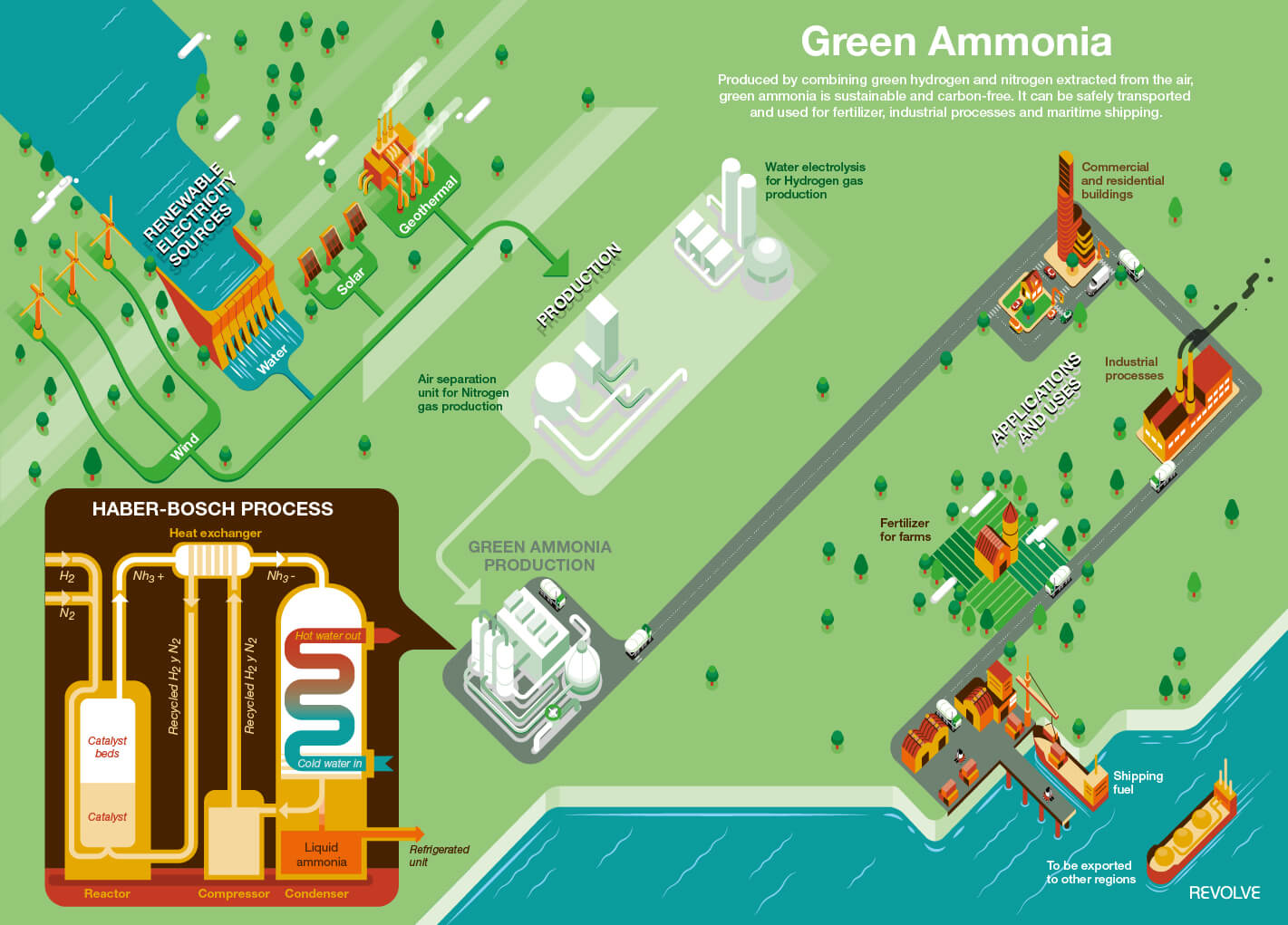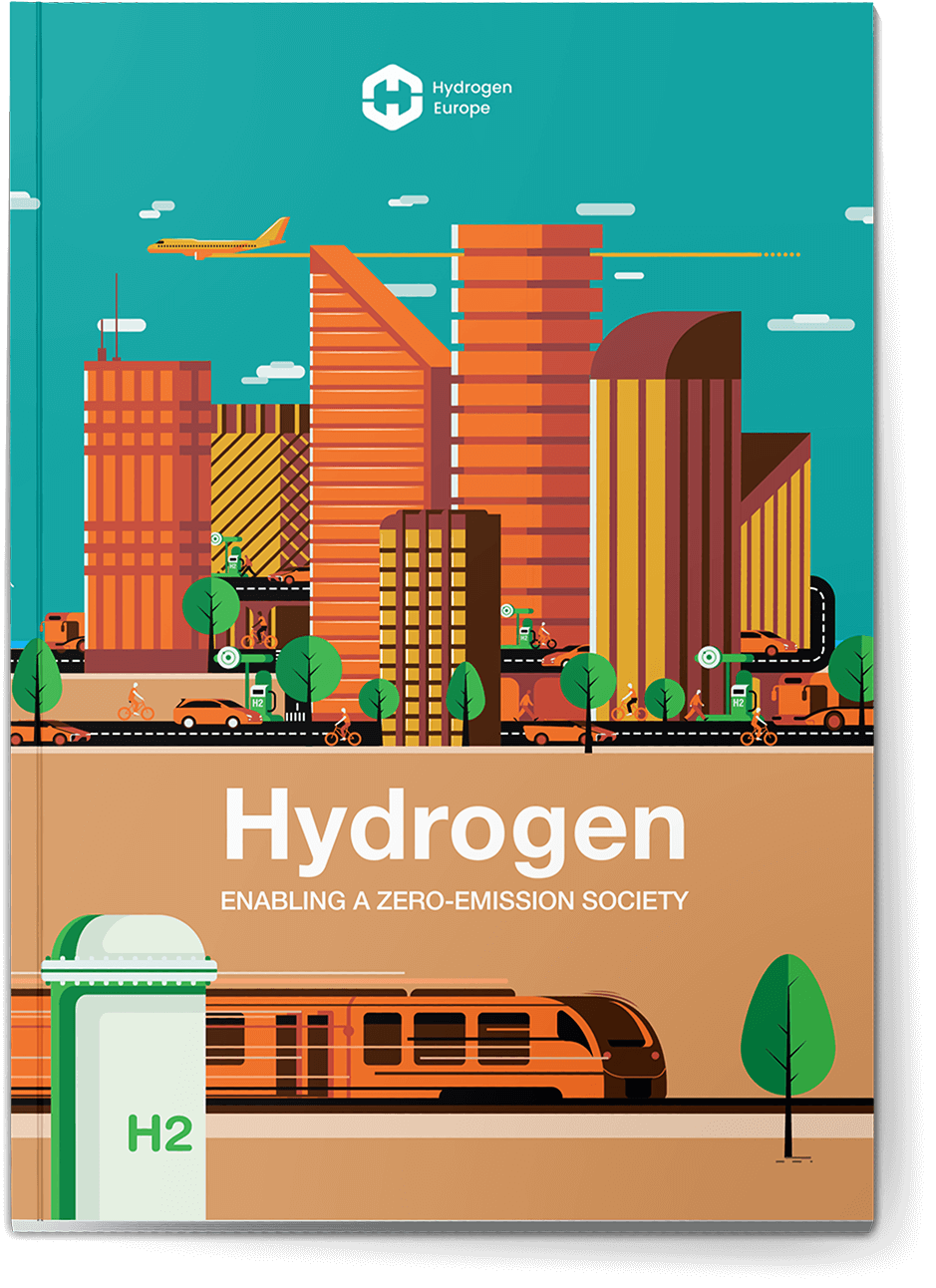Press Corner
Help yourself to facts, figures, and videos to enhance your coverage of hydrogen.
Request an interview with experts
Fill in the form below and we will get in touch with you regarding your request to interview an expert.
Facts & Figures
10 key facts to take with you anywhere about the value of hydrogen.
In 2022, demand for hydrogen is estimated at between 8.4 and 8.7mt.
Demand for hydrogen has grown more than threefold since 1975.
NASA fuels its spaceships with hydrogen and the resulting water is so pure that the astronauts drink it.
More than half of the total EU, EFTA, and UK hydrogen consumption takes place in just four countries: Germany, the Netherlands, Poland, and Spain.
To meet REPowerEU goals, investments between €86-126 billion will be needed.
Decarbonisation with hydrogen will require $15 trillion between 2022 and 2050.
Portugal produces the most affordable renewable hydrogen in the EU at €3.50/kg.
Despite increasing capacity for clean hydrogen in Europe, 99.3% of hydrogen was produced by conventional, polluting methods.
The European Hydrogen Backbone proposes 39,700 km of hydrogen pipelines by 2040.
Global hydrogen demand is forecast to more than double by 2030.
Busting 5 Myths
No. Hydrogen is a gas: it is the most abundant element in the universe, and here on Earth it typically needs to be extracted from water or organic compounds. We use renewable energy sources such as wind and solar power to extract hydrogen more sustainably with water vapor as a by-product and zero emissions. ‘Today, the production of ‘grey’ hydrogen (from natural gas) still dominates the international landscape, but ‘green’ hydrogen from renewables is taking off. Learn more about the different colours of hydrogen here.
Sources: American Public Power Association
Hydrogen was first produced by electrolysis in 1789 and first used as a fuel in 1792 when it was produced as a constituent of coal gas. The modern oil industry dating back to 1847 is youthful by comparison. Although hydrogen is a fuel in that it contains chemical energy, it is not like fossil fuels. It is artificially made, transported, then used to power something. As such, it is an energy carrier medium, more akin to electricity or steam.
Sources: FuelCellsWorks
When considering global events driving up oil prices and subsidies for its production, green hydrogen is right now cheaper than jet fuel. The three to fourfold increase in hydrogen demand predicted over the next decade will require 30% annual growth of global installed electrolyzer capacity every year until 2050. Every component in the hydrogen value chain will fall in price. The cost of electrolyzers could easily drop by 40% in a few years while some electrolyzer manufacturers projecting even faster declines.
Then comes the continuously falling price of the renewable electricity needed to make green hydrogen. Costs for utility-scale solar power, for example, have fallen 85% between 2010 and 2020. Some projections for renewable power fall to 2 cents per kWh by 2025, leading to a cost of green hydrogen at $1.5 per kg.
Source: Universal Hydrogen
While some estimates pin 2050 as when green hydrogen could become cost competitive, many factors, including the relative price of renewables, supportive policies, and ramped-up technology development could make using hydrogen more attractive as early as the 2030s. A 2020 review by the Hydrogen Council asserts that 22 of 35 applications for green hydrogen would be cost competitive relative to other noncarbon options before 2030. Projects are already underway with goals to convert generating plants to 100% hydrogen in the 2040s or earlier.
Sources: American Public Power Association
Hydrogen presents the same, if not fewer, hazards than other fuels due to its non-toxic and low-volatility characteristics. Since hydrogen is 14x lighter than air and 57x lighter than gasoline vapor, it will typically rise and disperse rapidly when leaked, greatly reducing the risk of ignition at ground-level.
Source: Swagelok
Colors of Hydrogen
Green hydrogen
Green hydrogen is mainly produced by splitting water – also know as water electrolysis – using electricity generated from renewable energy sources.
There are no CO2 emissions associated with this type of hydrogen production nor with its usage. When used in a fuel cell, the only by-product of its use is the pure water that was originally used in its production.
Although ‘green’ hydrogen often refers to hydrogen produced using electricity generated from renewable energy sources, it can also refer to hydrogen produced via different methods using other renewable sources such as biogas, biomethane, or bio-waste. These methods are less common than water electrolysis but also result in either very low or zero emissions.
Grey hydrogen
Grey hydrogen is currently the most common method of hydrogen production. It is produced from fossil fuel and commonly uses the steam methane reforming (SMR) method. During this process, CO2 is produced and released to the atmosphere.
While not as environmentally damaging as black or brown hydrogen, this process produces far more emissions than green hydrogen.
Black / Brown hydrogen
Black and brown hydrogen is produced from coal, with the colours referring to the type of bituminous (black) and lignite (brown) coal used in the production process.
Hydrogen is produced through the gasification of coal. This is an extremely polluting process, with CO2 and carbon monoxide produced as by-products and released into the atmosphere.
White hydrogen
White hydrogen refers to naturally occurring hydrogen in its most natural state. It is generated by a natural process inside the Earth’s crust, with projects already being set up to produce white hydrogen in industrial quantities.
Its extraction process is similar to natural gas, requiring drilling deep underground to tap into naturally occurring hydrogen wells. It is considered by some to be a cheaper alternative to green hydrogen.
Blue hydrogen
Blue hydrogen is derived from natural gas, however, most of the CO2 emitted during the process is captured and stored underground (carbon sequestration) or is extracted as a solid and is able to be reused.
When considering the CO2 emissions of ‘blue’ hydrogen, it is important to acknowledge the potential methane leakage upstream of the hydrogen production plant.
With this in mind, the term ‘blue hydrogen’ can be considered too broad. Instead, when referring to hydrogen produced from natural gas, it is more accurate to refer to it using the actual carbon footprint associated to its production.
Turquoise hydrogen
Turquoise hydrogen is extracted by using thermal splitting of methane via methane pyrolysis. This process is a relatively new method of hydrogen production and is still at the experimental stage.
This form of production results in the removal of solid carbon, rather than CO2 emissions. This solid carbon can be used in the production of car tires, plastics and batteries, and is considered a critical raw material.
The process uses natural gas as a feedstock, and if the energy for splitting the methane comes from renewable sources, the process is close to carbon neutral.
Pink / Red / Purple hydrogen
Pink, red, and purple hydrogen are all generated by splitting water using electricity generated from nuclear power plants.
Pink hydrogen is generated through the electrolysis of water, decomposing water into oxygen and hydrogen. Alternatively, red hydrogen is produced through the high-temperature catalytic splitting of water, with the chemicals used in the process reused in a closed-loop production cycle.
Finally, purple hydrogen is made though using nuclear power and heat through combined chemo-thermal electrolysis splitting of water.
Visual Materials
Colors of Hydrogen
Green
Source: Water/Renewable
Green hydrogen is mainly produced by splitting water – also know as water electrolysis – using electricity generated from renewable energy sources.
There are no CO2 emissions associated with this type of hydrogen production nor with its usage. When used in a fuel cell, the only by-product of its use is the pure water that was originally used in its production.
Although ‘green’ hydrogen often refers to hydrogen produced using electricity generated from renewable energy sources, it can also refer to hydrogen produced via different methods using other renewable sources such as biogas, biomethane, or bio-waste. These methods are less common than water electrolysis but also result in either very low or zero emissions.
Turquoise
Source: Methane
Turquoise hydrogen is extracted by using thermal splitting of methane via methane pyrolysis. This process is a relatively new method of hydrogen production and is still at the experimental stage.
This form of production results in the removal of solid carbon, rather than CO2 emissions. This solid carbon can be used in the production of car tires, plastics and batteries, and is considered a critical raw material.
The process uses natural gas as a feedstock, and if the energy for splitting the methane comes from renewable sources, the process is close to carbon neutral.
Grey
Source: Fossil fuels
Grey hydrogen is currently the most common method of hydrogen production. It is produced from fossil fuel and commonly uses the steam methane reforming (SMR) method. During this process, CO2 is produced and released to the atmosphere.
While not as environmentally damaging as black or brown hydrogen, this process produces far more emissions than green hydrogen.
White
Source: Natural
White hydrogen refers to naturally occurring hydrogen in its most natural state. It is generated by a natural process inside the Earth’s crust, with projects already being set up to produce white hydrogen in industrial quantities.
Its extraction process is similar to natural gas, requiring drilling deep underground to tap into naturally occurring hydrogen wells. It is considered by some to be a cheaper alternative to green hydrogen.
Pink / Red / Purple
Source: Water/Nuclear
Pink, red, and purple hydrogen are all generated by splitting water using electricity generated from nuclear power plants.
Pink hydrogen is generated through the electrolysis of water, decomposing water into oxygen and hydrogen.
Alternatively, red hydrogen is produced through the high-temperature catalytic splitting of water, with the chemicals used in the process reused in a closed-loop production cycle.
Finally, purple hydrogen is made though using nuclear power and heat through combined chemo-thermal electrolysis splitting of water.
Blue
Source: Natural gas
Blue hydrogen is derived from natural gas, however, most of the CO2 emitted during the process is captured and stored underground (carbon sequestration) or is extracted as a solid and is able to be reused.
When considering the CO2 emissions of ‘blue’ hydrogen, it is important to acknowledge the potential methane leakage upstream of the hydrogen production plant.
With this in mind, the term ‘blue hydrogen’ can be considered too broad. Instead, when referring to hydrogen produced from natural gas, it is more accurate to refer to it using the actual carbon footprint associated to its production.
Black / Brown
Source: Coal
Black and brown hydrogen is produced from coal, with the colours referring to the type of bituminous (black) and lignite (brown) coal used in the production process.
Hydrogen is produced through the gasification of coal. This is an extremely polluting process, with CO2 and carbon monoxide produced as by-products and released into the atmosphere.




